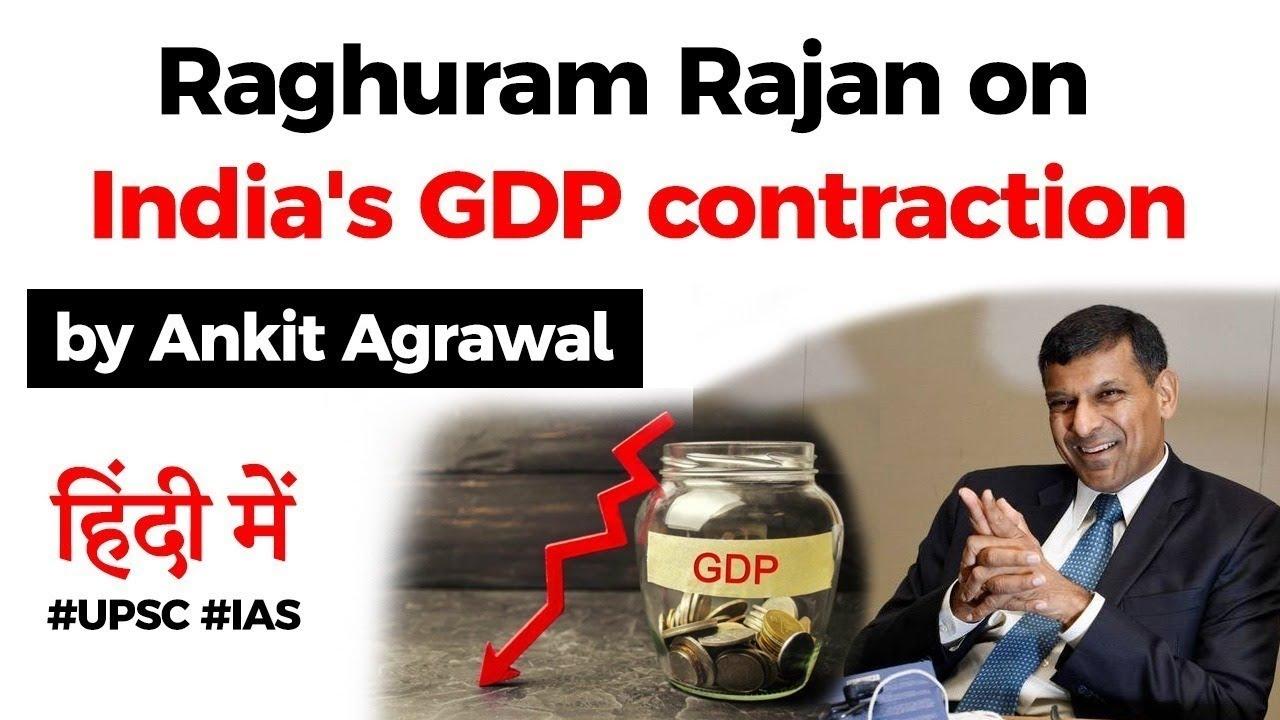Table of Contents
 Introduction
Introduction
- The 9% contraction in India (and the numbers will probably be worse when we get estimates of the damage in the informal sector)
- Compares with a drop of 4 percent in Italy and 9.5 percent in the United States, two of the most COVID-affected advanced countries.
- Yet India is even worse off than these comparisons suggest.
- The pandemic is still raging in India, so discretionary spending, especially on high-contact services like restaurants, and the associated employment, will stay low until the virus is contained.
Government’s role
- Government-provided relief becomes all the more important.
- This has been meager;-
- Primarily free food grains to poor households; and credit guarantees to banks for lending to small and medium (SMEs) firms, where they takedown has been patchy.
- The government’s reluctance to do more today seems partly because it wants to conserve resources for a possible future stimulus.
- This strategy is self-defeating.
But How?
- If you think of the economy as a patient, relief is the sustenance the patient needs while on the sickbed and fighting the disease.
- Without relief, households skip meals, pull their children out of school and send them to work or beg, pledge their gold to borrow, let EMIs and rent arrears pile up…Similarly, without relief, small and medium firms – think of a small restaurant — stop paying workers, let debt pile up, or close permanently.
- Essentially, the patient atrophies, so by the time the disease is contained, the patient has become a shell of herself.
- Now think of economic stimulus as a tonic. When the disease is vanquished, it can help the patient get out of her sickbed faster.
- But if the patient has atrophied, the stimulus will have little effect.
- Even if they start earning, indebted households will not consume freely, especially if they believe they have to manage further periods without livelihoods or government help.
- So government officials who hold out the possibility of a stimulus when India finally contains the virus are underestimating the damage from a more shrunken and scarred economy at that point.
- Instead of claiming there is a V-shaped recovery around the corner, they should wonder why the United States, despite spending over 20 percent of GDP in fiscal and credit relief measures,
- Is still worried the economy will not return to pre-pandemic GDP levels by the end of 2021.
But what about pilling debt?
- On the resource front, India could borrow more if it is committed to return to fiscal viability over the medium term.
- For example, By setting future debt reduction targets through legislation and
- Committing to honest and transparent fiscal numbers with a watchdog independent fiscal council.
How the govt should spend?
- The key will be to prioritize.
- MNREGA is a tried and tested means of providing rural relief and should be replenished as needed.
- Given the length of the pandemic, more direct cash transfers to the poorest households, especially in urban areas that do not have access to MNREGA, is warranted.
- The government and public sector firms should clear their payables quickly so that liquidity moves to corporations.
- In addition, small firms below a certain size could be rebated the corporate income and GST tax they paid last year.
- Finally, the government will likely have to set aside resources to recapitalize public sector banks as the extent of losses are recognized.
Private firms role
- The private sector should also be urged to give a helping hand.
- Cash-rich platforms like Amazon, Reliance, and Walmart could help smaller suppliers get back on their feet, even funding some of them.
Financial distress
- As the various payment moratoria come to an end, a number of entities will be unable to repay.
- Instead of reacting in a piece-meal way, the government should have a well-thought-out plan to deal with the coming financial distress.
- A number of arbitration forums should be set up to renegotiate claims of various sizes.
- Infrastructure
- Given the depth of the contraction, the stimulus will also be needed,
- Especially investment in infrastructure construction which creates jobs and increases the demand for all manner of inputs like cement and steel.
- The center should replenish the coffers of the state governments, which typically spend more on infrastructure.
Export
- The world will recover earlier than India, so exports can be a way for India to grow.
- For that to happen, the government has to reverse its recent raising of tariffs so that inputs can be imported at a low cost.
- To improve our competitiveness, long-debated reforms to land acquisition, labor, power, and the financial sector should be implemented,
- As should recently announced reforms in agriculture.
Conclusion
- India needs strong growth, not just to satisfy the aspirations of our youth but to keep our unfriendly neighbors at bay.
- No doubt, the government and its bureaucrats are working hard as always, but they need to be frightened out of their complacency and into meaningful activity.
Latest Burning Issues | Free PDF























 WhatsApp
WhatsApp